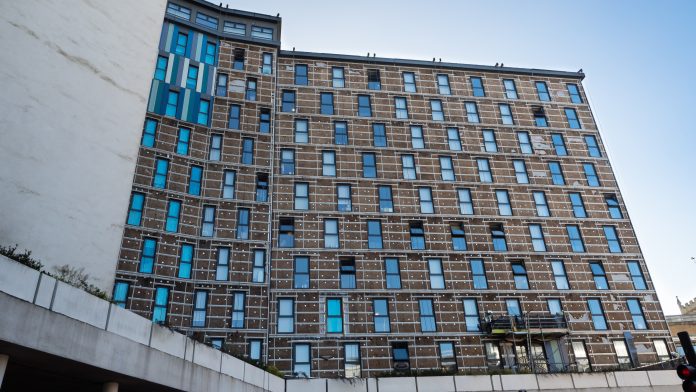A DLUHC data release has disclosed that five years after Grenfell, there are still 300 high-rise buildings with incomplete unsafe cladding removal works
The Building Safety Programme Monthly Data Release from the Department of Levelling up, Housing and Communities has shown that there are still over 300 high-rise buildings with incomplete unsafe cladding removal works, five years after the Grenfell Tower fire.
Most high-rise buildings with Aluminium Composite Material (ACM) cladding systems that still do not meet existing standards and no ongoing remedial works are concentrated around urban centres in England, particularly in Manchester (72) and Greater London (272).
At the end of August 2022, 462 identified high-rise residential and publicly owned buildings in England had either completed or started remediation work
Remediation is fully complete for 178 buildings in London (65% of all buildings identified in London), 45 buildings in Greater Manchester (63%), and 117 buildings in the Rest of England (82%).
Of the high-rise buildings with ACM cladding remaining, 24 have started remediation. Of the 24 (5%) buildings yet to start unsafe cladding removal, two are vacant(so do not represent an immediate risk to resident safety), and 14 additional buildings were later identified after the initial numbers were calculated in 2020.
Overall, there are 272 high-rise residential and publicly owned buildings in London identified with ACM cladding systems that the data release describes as ‘unlikely to meet building regulations’; 72 in Greater Manchester and 142 in the rest of England.
What funding exists to pay for the remediation works?
The government has made up to £600m available for the remediation of unsafe ACM on social and private sector residential buildings 18 metres or over through the Social and Private Sector ACM Cladding Remediation Funds.
254 buildings are receiving or have received funding for their remediation from these funds.
The government also created the Waking Watch Fund, which pays for alarms to be installed in high-rise residential buildings with unsafe cladding.
Of the £35m of funding available, as of August 2022 £27.4m has been approved to enable Waking Watch measures in 321 buildings, or an estimated 24,800 leasehold dwellings. Of these approved buildings, 278 have completed alarm installations.
The Building Safety Act 2022 offers protection to residents from the expense of unsafe cladding removal works
The Building Safety Act, which became law in April 2022, protects residents and leaseholders living in their apartments from the cost of taking dangerous cladding off high-rise buildings. £5.1bn has been allocated by the Government towards this aim, prioritizing the highest risk cases first.
In January, the DLUHC outlined a four-point plan aiming to revitalise the Government’s approach to unsafe housing, including naming and shaming companies at fault, making them fix the buildings they built and face commercial consequences if they refuse.
The next data release from DLUHC will be on the 13 October 2022.

















